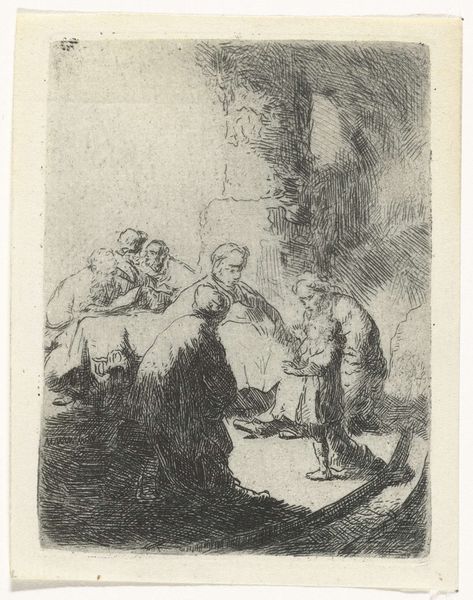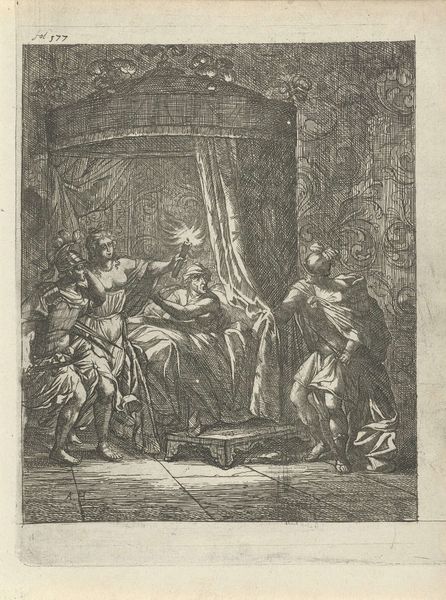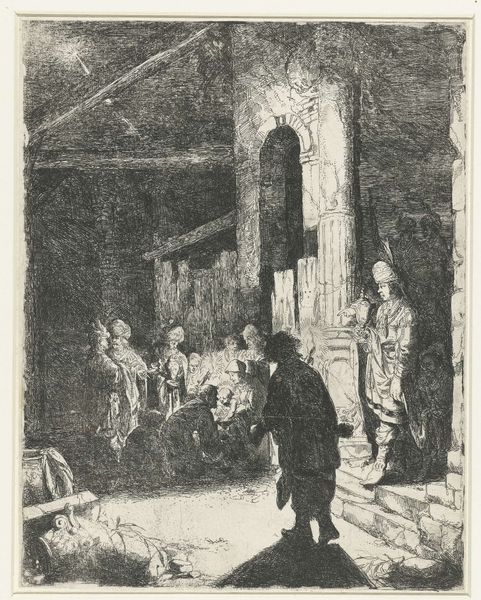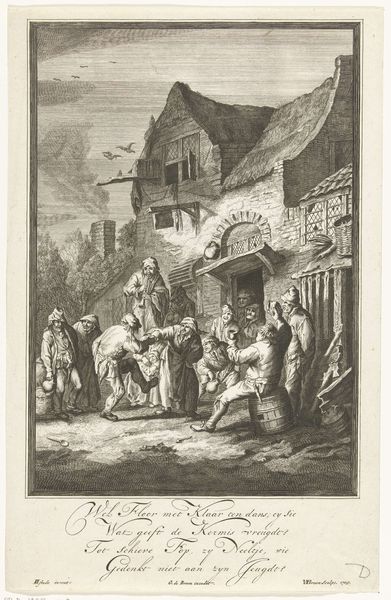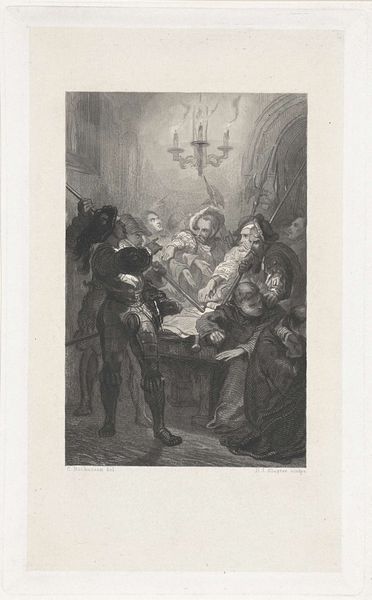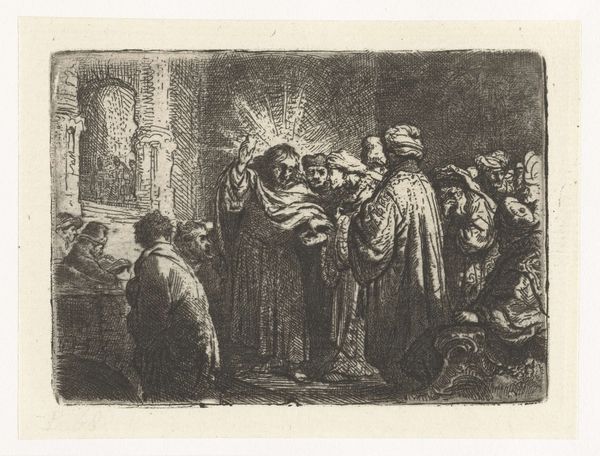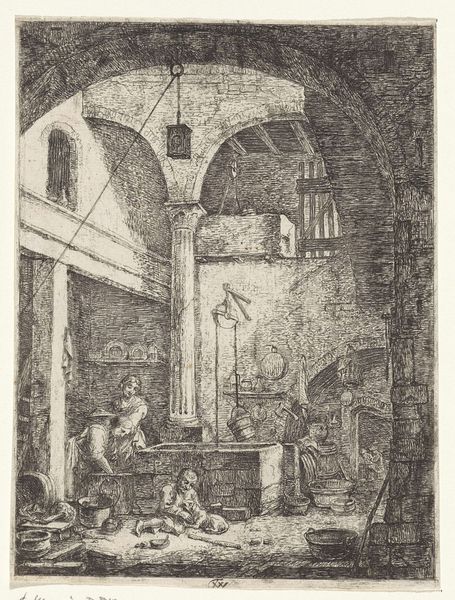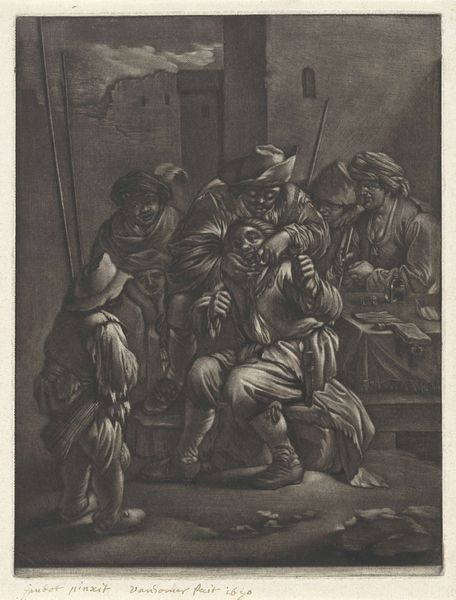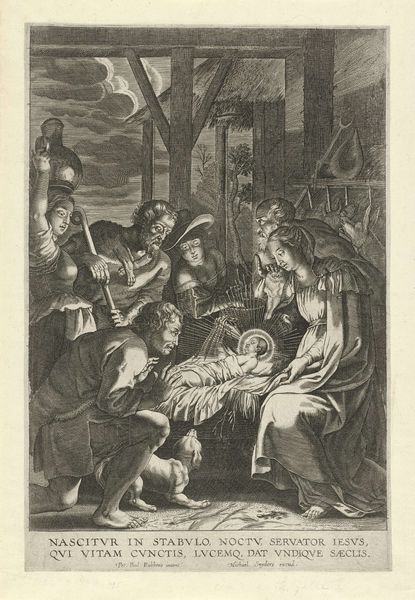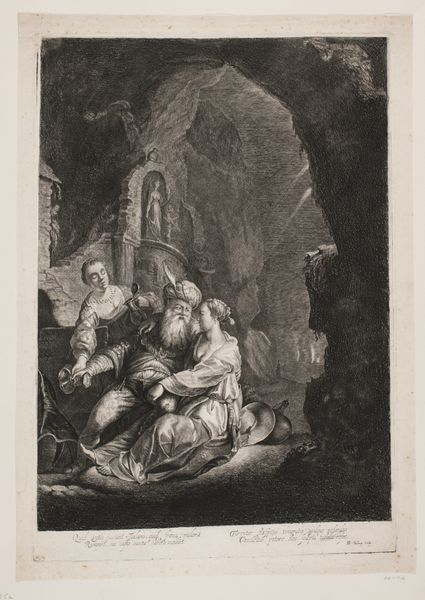
print, etching
#
narrative-art
#
baroque
# print
#
etching
#
etching
#
figuration
#
line
#
genre-painting
#
realism
Dimensions: height 102 mm, width 72 mm
Copyright: Rijks Museum: Open Domain
Curator: Right now we are looking at a small etching called "Adoration of the Shepherds" by Jan van Noordt. It was likely created sometime between 1634 and 1676, using the etching technique. Editor: Immediately I see the stark contrast of light and shadow, creating an almost dreamlike quality around this sacred scene. The overall effect is a moodiness, perhaps even melancholy, despite the joyous subject. Curator: The light you point out is vital to Baroque art, especially Dutch Baroque. Notice how Noordt utilizes that strong chiaroscuro, that contrast between light and dark, not just for dramatic effect, but also to direct the viewer's gaze directly to the newborn baby. Editor: Absolutely. It’s as though the light itself emanates from the infant. The surrounding figures are drawn in with incredible detail, their faces etched with a mixture of awe and weariness. You sense the sheer human exhaustion and vulnerability in the presence of something truly miraculous. It's a complex interplay of emotions. Curator: Indeed. That interplay is exactly where the symbolic weight lies. The shepherds, traditionally figures of humble status, are brought before the divine. This resonates with a long cultural narrative of grace offered to the marginalized. Etching, by its nature, often carries that sense of stark reality; the medium allows the artist to create intricate lines and textures. Noordt capitalizes on that beautifully here. Editor: It's fascinating to see such a grand theme rendered with such delicate lines. The entire image shimmers with implied motion—a testament to the artist's technical skill, given the unforgiving nature of etching. It’s as if Noordt sought to capture a fleeting, profoundly personal moment of spiritual realization. Curator: I agree, and that interpretation highlights a powerful theme that resonates even now. The convergence of humble folk around something bigger, greater, than themselves and the individual recognition of the sacred—it still invites a thoughtful examination. Editor: Definitely. You know, after seeing that again, I find a renewed appreciation of that interplay between darkness and hope, especially relevant in these tumultuous times, reflecting on this intimate, profound scene.
Comments
No comments
Be the first to comment and join the conversation on the ultimate creative platform.
